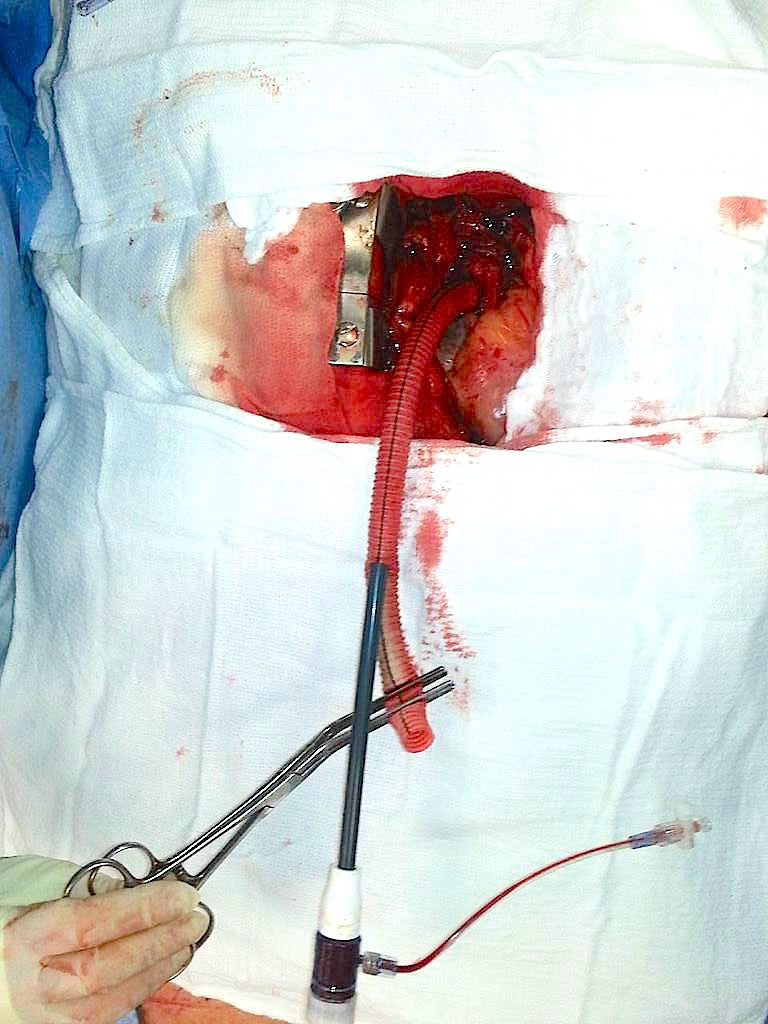A Novel Approach For the Treatment of A Penetrating Aortic Ulcer
Michael C. Siah, MD1, Vahram Ornekian, MD1, Nelson Bernardo, MD1, Ezequiel Molina, MD1, Cameron Akbari, MD2.
1Medstar Washington Hospital Center, Washington, DC, USA, 2Medstar Georgetown University Hospital, Washington, DC, USA.
Objective:
Thoracic endovascular aortic repair (TEVAR) is an effective means of treat acute aortic syndromes in patients unable to tolerate open surgery. There are a small subset of patients through which transaortic delivery of endografts is not possible. We report a hybrid access approach, in which an ascending aortic conduit was used for antegrade delivery of an endograft to repair a penetrating aortic ulcer (PAU).
Methods:
A 65-year-old female with oxygen dependent COPD presented with an acute onset of chest and back pain. Computed tomography demonstrated the presence of a large penetrating ulcer of the descending thoracic aorta. She was taken emergently for repair of her symptomatic PAU.
Intraoperative imaging demonstrated extensive aortic calcification precluding our ability to safely place an endograft in a retrograde or antegrade fashion via a transfemoral or axillosubclavian approach. Thoracotomy was deemed too high a risk given her severe pulmonary disease. We selected the ascending aorta for endograft delivery.
A Dacron conduit was affixed to the ascending aorta and a TEVAR was deployed via the aortic conduit (Figure 1). Completion aortography demonstrated complete exclusion of the aortic ulceration, no evidence of endoleak, and preserved branch vessel flow.
Results:
We present a hybrid approach via an ascending aortic conduit for endovascular exclusion of PAU. Our case illustrates technical feasibility of antegrade deployment of TEVAR via a proximal aortic conduit for PAU.
Conclusions: Penetrating aortic ulcers have become yet another aortic pathology being treated by endovascular means in recent times. Patients with PAU often suffer from heavy atherosclerotic disease burdens making instrumentation of their vessels treacherous. An interdisciplinary approach involving cardiovascular surgeons and interventionalists is often required to safely execute a planned endovascular repair.
Figure 1. Dacron conduit affixed to ascending aorta with 22Fr delivery sheath in place.
Back to 2017 Karmody Posters




